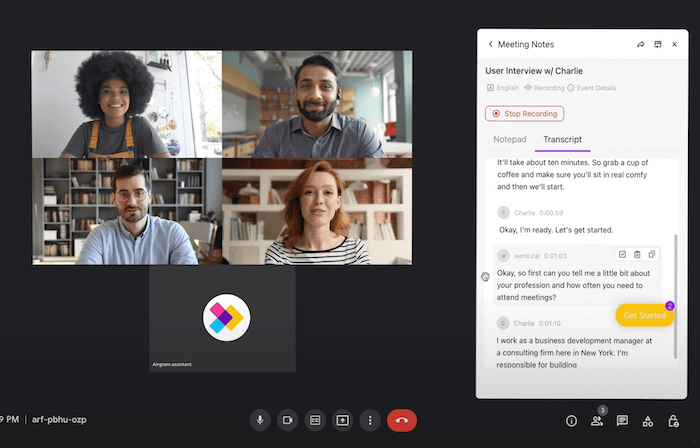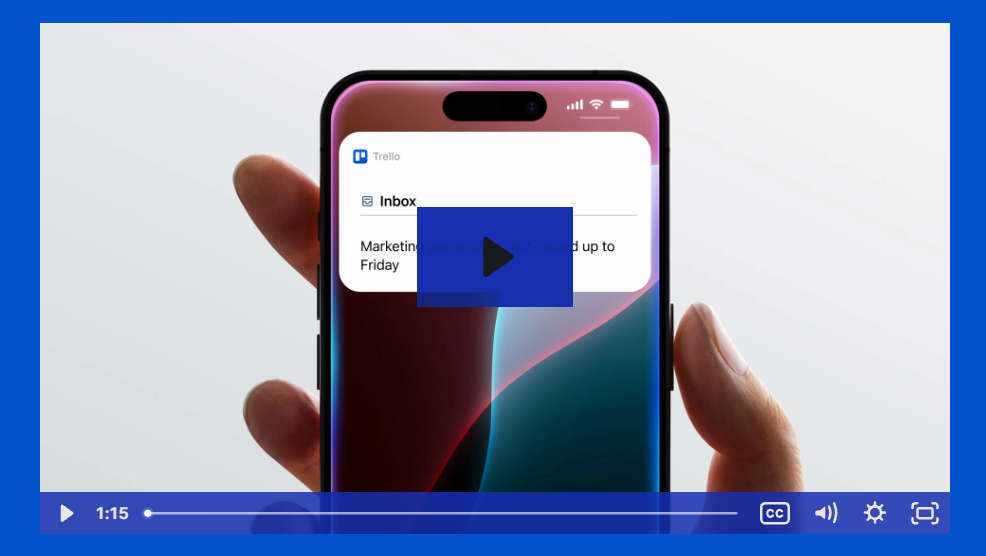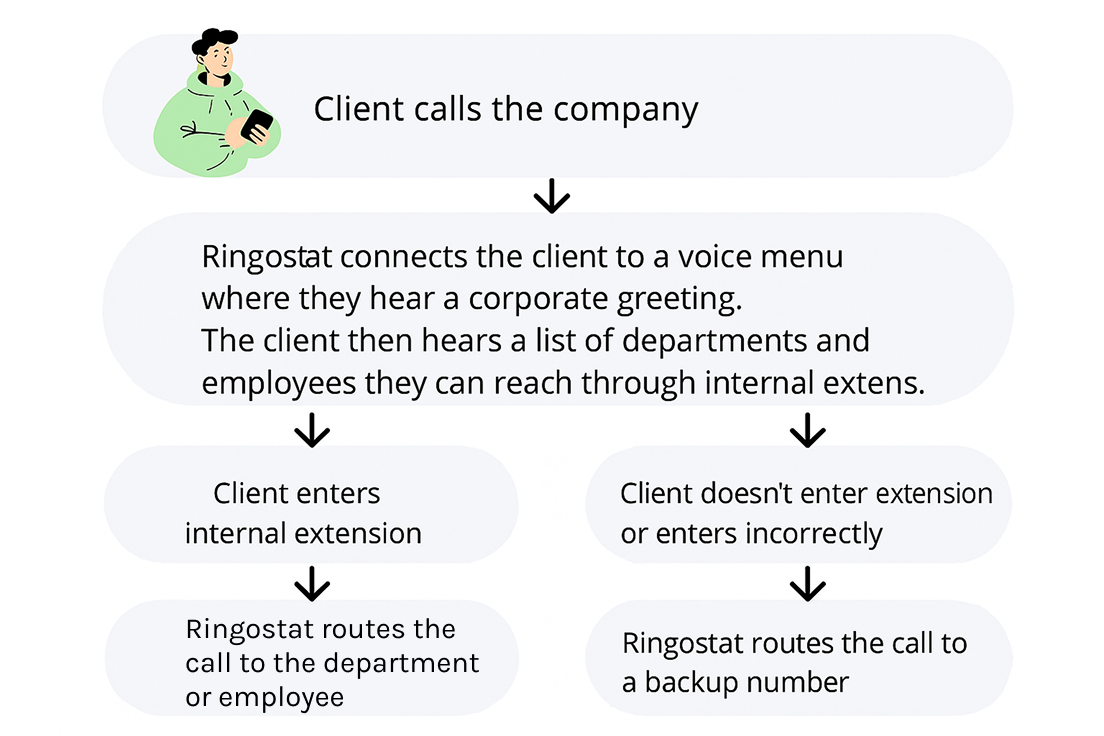In today’s fast-paced business landscape, effective communication is paramount. This comprehensive guide explores over 15 key business communication channels, their types, and winning strategies. AIScreen team covers the entire spectrum of communication tools, from traditional face-to-face meetings and phone calls to modern digital platforms such as email, social media, and video conferencing. Learn how to adapt your communication strategies to different channels, audiences, and objectives, ensuring your business stays agile and thriving in the ever-evolving world of business communication.
- What Is A Communication Channel In Business
- What Are The Different Types Of Channels Of Communication In Business
- 1. Face-to-Face Communication
- 2. Written Communication
- 3. Telephone Communication
- 4. Email Communication
- 5. Social Media Communication
- 6. Video Conferencing
- 7. Digital boards
- 8. Instant Messaging (IM)
- 9. Intranet and Internal Portals
- 10. Collaboration Software
- 11. Digital Signage
- 12. Webinars and Webcasts
- 13. Podcasts
- 14. Text Messaging (SMS)
- 15. Company Newsletters
- 16. Interactive Voice Response (IVR) Systems
- 17. Live Chat
- 18. Trade Fair Appearances
- The 4 Types Of Business Communication
- Strategies To Enhance Your Corporate Communication
- Examples Of The Best Business Communication Channels
- Conclusion
What Is A Communication Channel In Business
In business, a communication channel refers to the medium or platform through which information, messages, and data are transmitted between individuals, teams, or entities within an organization or between organizations and external stakeholders.
These channels can take various forms, including face-to-face meetings, phone calls, emails, instant messaging, video conferencing, social media, memos, newsletters, and more.
Each communication channel serves a distinct purpose and is chosen based on factors such as the nature of the message, the intended audience, the urgency of communication, and the desired level of interactivity.
Effective management of communication channels in business is crucial for ensuring that information flows smoothly, enabling collaboration, decision-making, and achieving organizational goals.
Businesses must select and employ the most suitable communication channels to optimize communication processes and facilitate productive interactions.
What Are The Different Types Of Channels Of Communication In Business
Effective communication is the lifeblood of any successful business. In today’s fast-paced and interconnected world, organizations have a wide array of communication channels in business at their disposal to convey information, share ideas, and connect with various stakeholders.
This section will explore 15+ communication channels commonly used in business, focusing on the increasingly popular digital signage as the third channel.
1. Face-to-Face Communication
Face-to-face communication stands as a cornerstone within the realm of business interactions. This channel encompasses a spectrum of in-person engagements, including formal meetings, conferences, seminars, and even the casual exchanges that transpire within the workplace.
Its enduring significance lies in its ability to facilitate immediate feedback, resolve uncertainties promptly, and allow for the nuanced interpretation of non-verbal cues. These qualities render face-to-face communication an invaluable tool for cultivating trust and nurturing robust relationships between team members, managers, and clients.
In an age marked by technological advancements and virtual communication, the enduring power of face-to-face interactions remains a testament to its effectiveness in building connections and fostering mutual understanding within the business landscape.
2. Written Communication
Written communication spans diverse textual mediums, including emails, letters, reports, memos, and documentation. It is prominent in formal and official correspondences within and beyond organizational boundaries.
One of its paramount advantages lies in its role as an archival tool, meticulously recording discussions, instructions, and decisions, thus serving as an invaluable reference point for future use.
This quality proves essential for transmitting intricate information, creating comprehensive records for agreements, and assurance of clarity and precision in all facets of business dealings.
In essence, written communication conveys messages effectively and is the foundation of transparent, well-documented, and accountable business operations.
3. Telephone Communication
Telephone communication is a vital business channel, facilitating real-time voice conversations with employees, customers, suppliers, and various stakeholders. This direct and personal mode of interaction is a pivotal means to address inquiries, resolve issues, and promptly conduct business transactions.
Moreover, the evolution of telephone technology has broadened the scope and convenience of this channel. Beyond traditional landline phones, the widespread adoption of mobile phones and the integration of Voice over Internet Protocol (VoIP) systems have amplified the reach and flexibility of telephone communication.
Read more in the article “Simple things you want to know about the SIP phone system”.
4. Email Communication
Email has become the cornerstone of written communication in the digital age. It enables businesses to electronically send text, documents, images, and other files to individuals or groups.
Email is widely used for internal and external communication among team members and departments with clients, partners, and vendors. It offers the advantage of asynchronous communication, allowing recipients to respond conveniently and making it a versatile tool for various business purposes.
5. Social Media Communication
Social media has become a powerful business communication channel in today’s digital landscape. Platforms such as Facebook, Twitter, LinkedIn, Instagram, and others provide avenues for companies to engage with their target audience, share content, gather feedback, and build brand presence.
Social media allows for real-time interactions, making it an effective channel for customer service, marketing, and public relations. It also enables businesses to reach a global audience and gain valuable insights into customer preferences and trends.
Let’s explore six more communication channels commonly utilized in the business world.
6. Video Conferencing
Video conferencing has emerged as a cornerstone of modern business communication, especially in an era marked by remote work and global collaboration. This channel enables real-time visual and audio interactions among individuals or groups, regardless of physical location.
Platforms like Zoom, Microsoft Teams, and Skype for Business have gained prominence, allowing businesses to conduct virtual meetings, presentations, training sessions, and interviews.
Video conferencing enhances communication by providing face-to-face interactions without needing physical presence, fostering engagement, collaboration, and a sense of connection among participants.

7. Digital boards
A digital board offers real-time interaction, visibility, and an ideal business communication channel. Its dynamic nature enables seamless dissemination of information across teams, fostering collaboration and ensuring everyone stays informed.
Digital menu boards are a stellar example of digital boards in business communication, notably in the restaurant industry. They serve as powerful tools, streamlining the communication of menu items, promotions, and updates to customers in a visually engaging manner.

Beyond restaurants, digital boards find utility in corporate settings for sharing real-time updates, in educational institutions for announcements, and in retail spaces for showcasing product information and offers. Their adaptability across diverse sectors highlights their value as a versatile and informative communication channel.
8. Instant Messaging (IM)
Instant messaging platforms like Slack, Microsoft Teams, and WhatsApp have revolutionized workplace communication. IM offers a quick and convenient means for employees to exchange text, files, and multimedia messages in real-time.
It’s precious for informal discussions, project collaboration, and quick problem-solving. IM tools often feature group chats, channels, and integration with other business applications, streamlining communication within organizations.
IM’s asynchronous nature also allows individuals to respond when it suits their workflow, enhancing productivity and reducing the need for lengthy email chains.
9. Intranet and Internal Portals
Intranets and internal portals serve as private, web-based platforms within an organization. They provide a centralized hub for sharing information, documents, policies, and updates with employees.
Intranets facilitate easy access to essential resources, fostering transparency and informing employees about company news and events. Internal portals often include discussion forums, knowledge bases, and collaboration tools to encourage engagement and knowledge sharing among team members.
By utilising these channels, companies can create a cohesive digital workspace that enhances internal communication and knowledge management.
10. Collaboration Software
Collaboration software, such as Microsoft SharePoint, Google Workspace (formerly G Suite), and Trello, streamline teamwork by providing a digital environment for document collaboration, project management, and task tracking.
These platforms allow multiple users to work on documents simultaneously, making collaborating on reports, presentations, and projects easier. Collaboration software often integrates with communication tools, enabling seamless transitions between discussions and task execution.

It promotes transparency, accountability, and efficient teamwork, making it an invaluable channel for enhancing organizational productivity and communication.
11. Digital Signage
Digital signage, a dynamic and visually captivating communication channel, relies on electronic displays in public spaces like corporate lobbies, waiting areas, and retail environments.
These versatile displays serve as canvases for a diverse range of content, encompassing announcements, advertisements, company news, event schedules, and even real-time data.
One of the most notable advantages of digital signage lies in its ability to seize the attention of a broad audience, including employees, customers, and visitors. This makes it an exceptionally effective tool for conveying crucial information, whether internal updates or promotional material, while enhancing the overall brand experience.
By harnessing the power of digital signage, businesses can create immersive, informative, and visually appealing environments that leave a lasting impact on their target audience.
12. Webinars and Webcasts
Webinars and webcasts are powerful communication channels in business for sharing information, hosting training sessions, and conducting virtual events. They enable companies to reach a broad online audience by broadcasting live or prerecorded content over the Internet. Webinars typically involve interactive features such as Q&A sessions, polls, and chat functions, allowing participants to engage with presenters and fellow attendees.
These platforms are valuable for disseminating knowledge, showcasing expertise, and building brand authority. Additionally, webinars and webcasts often provide recordings for on-demand access, extending the longevity and reach of the content.
13. Podcasts
Podcasting has gained popularity as a versatile and accessible communication channel for businesses. Podcasts allow companies to create audio content on various topics, from industry insights to thought leadership, product updates, and employee interviews.
Listeners can access podcasts conveniently, making it a convenient way to reach and engage a diverse audience. Businesses can leverage podcasts to establish themselves as industry experts, strengthen their brand, and connect with stakeholders on a personal level.
Podcasting platforms like Apple, Spotify, and Google Podcasts offer wide distribution and audience analytics, facilitating effective communication strategies.
14. Text Messaging (SMS)
Text messaging, or SMS (Short Message Service), remains a widely used and efficient business communication channel. It allows organizations to send concise text messages to employees, customers, and clients directly to their mobile devices.
SMS is particularly effective for sending urgent notifications, appointment reminders, order updates, and marketing promotions. Many businesses also use SMS for two-factor authentication (2FA) to enhance security. With high open rates and near-instant delivery, SMS is a valuable tool for reaching a mobile audience and delivering time-sensitive information.
15. Company Newsletters
Company newsletters are a regular communication channel for sharing updates, news, and valuable content with employees, customers, and subscribers. These newsletters can be distributed through email, printed copies, or digital platforms.
Business newsletters provide a structured and organized way to convey important information such as product launches, industry trends, success stories, and company culture updates. By delivering relevant and engaging content, newsletters can help build brand loyalty, foster customer engagement, and keep stakeholders informed and connected.
16. Interactive Voice Response (IVR) Systems
Interactive Voice Response (IVR) systems are automated telephony systems that enable businesses to interact with callers through voice and touch-tone keypad selections.
IVR is commonly used for customer service, routing calls to the appropriate departments, or providing self-service options for common inquiries. IVR systems can also gather information from callers, schedule appointments, and provide account-related details.

By streamlining call handling and providing immediate responses, IVR systems enhance efficiency in customer interactions, reduce call wait times, and ensure consistent communication experiences.
17. Live Chat
Live Chat on a website is an increasingly popular tool for direct customer engagement. Its primary advantage lies in providing instant interaction with potential customers.
This immediacy can significantly boost customer satisfaction and conversion rates. Live Chat is also a cost-effective alternative to traditional phone support, capable of handling multiple inquiries simultaneously.
Additionally, it offers valuable data collection opportunities, providing insights into customer preferences and pain points. However, it does come with certain drawbacks. Live Chat is resource-intensive, requiring dedicated staff for real-time responses.
This can be particularly challenging for smaller businesses. Also, its effectiveness is often limited to business hours unless automated solutions like chatbots are implemented.
18. Trade Fair Appearances
Trade Fair Appearances offer a more traditional but highly effective channel for direct audience interaction. These events provide a unique platform for businesses to engage directly with a targeted audience, offering opportunities for live product demonstrations, immediate feedback, and building personal connections.
Trade fairs offer significant brand exposure and networking opportunities, allowing businesses to connect with industry peers, potential clients, and suppliers.
However, the downsides include high costs associated with participation, such as booth design, staffing, travel, and accommodations.
Additionally, preparing for trade fairs is time-consuming, and the return on investment can take time to measure immediately.
The 4 Types Of Business Communication
Business communication is a multifaceted domain encompassing information exchange within and between the organization and external parties. There are four primary types of business communication: upward, downward, lateral, and external.
1. Upward Communication
Upward communication involves information flow from lower levels of a hierarchy to the upper levels. It is commonly observed when employees or middle managers convey information to higher management.
This communication type is crucial for informing upper management about ground realities and employee sentiments. It encourages employees to voice their concerns, queries, or suggestions, thereby fostering a transparent organizational culture.
However, power dynamics often challenge upward communication. Employees might hesitate to share information candidly with superiors due to fear of reprisal or misunderstanding.
To mitigate this, management should cultivate an open communication environment, practice active listening, and use varied communication channels like feedback surveys, office hours, and internal communication platforms. Such efforts help build an inclusive, honest, and growth-oriented company culture.
2. Downward Communication
Conversely, downward communication flows from the higher echelons of an organization to the lower levels. This type involves senior management disseminating information, policies, or directives to employees. This communication is essential for aligning the organization with its goals, delegating responsibilities, and ensuring adherence to standards and regulations.
One of the challenges of downward communication is the potential distortion of messages as they cascade down the hierarchy and the sluggishness often associated with hierarchical communication.
To enhance the efficacy of downward communication, scheduled written communications like bulletins and memos and open channels for feedback and clarification are recommended. A balance between downward and upward communication is vital to prevent employee disengagement.
3. Lateral Communication
Lateral or horizontal communication occurs among peers or across departments at the same hierarchical level. This form of communication is integral for collaboration, knowledge sharing, and problem-solving within the organization.
It helps in quick decision-making and fosters a cohesive team environment. Potential drawbacks include the emergence of silos or an “us versus them” attitude among different departments, which can hamper overall productivity.
To counter these challenges, management should promote a team-oriented mindset, encourage interdepartmental communication, and utilize project management tools and electronic communication platforms to facilitate better understanding and cooperation.
4. External Communication
External communication refers to an organisation’s interactions with entities outside its internal structure, such as clients, customers, partners, and the public. This type of communication is pivotal in shaping the organization’s public image, building customer relationships, and promoting business growth.
Challenges in external communication include maintaining a consistent and positive image and avoiding miscommunication, which can adversely affect the organization’s reputation.
Adopting appropriate communication etiquette, ensuring clarity and purpose in messages, building personal connections, and possibly outsourcing to professional communication services are beneficial strategies to achieve effective external communication.
Strategies To Enhance Your Corporate Communication
In an era marked by globalization, remote work, and rapid technological advancements, mastering the art of corporate communication has become even more critical.
This section explores six strategies to enhance corporate communication, promoting transparency, engagement, and overall success.
1. Establish Clear Objectives and Messaging
The foundation of effective corporate communication is a well-defined set of objectives and consistent messaging.
Before communicating with your employees or stakeholders, clarifying what you want to achieve with each message is essential. Are you informing, persuading, motivating, or seeking feedback? Once you’ve set clear objectives, craft your messaging accordingly.
Consistency in messaging is equally vital. Ensure your core messages align with your organization’s values, mission, and goals.
Whether it’s a company-wide email, an internal memo, or a public statement, every communication should reinforce the same key messages. This consistency creates a unified and coherent brand image while eliminating confusion and misinterpretation.
2. Embrace Two-Way Communication
Effective corporate communication is a two-way street. Encourage and facilitate two-way communication within your organization. Give your employees a voice, and pro allows to express their thoughts, ideas, concerns, and feedback.
Internal communication channels, such as employee surveys, suggestion boxes, regular team meetings, and open-door policies, should be established to foster dialogue. Actively listen to your employees, acknowledge their input, and take action when necessary.
Engaging in two-way communication makes your employees feel valued and gain valuable insights that can inform decision-making and improve overall morale.
3. Leverage Technology and Digital Platforms
In today’s digital age, leveraging technology and digital platforms is essential for effective corporate communication. Embrace tools and platforms facilitating communication, collaboration, and information sharing among your employees.
Internal Communication Tools: Utilize Slack, Microsoft Teams, or Workplace by Facebook to streamline internal messaging and collaboration. These platforms offer features like instant messaging, file sharing, and integrations with other business apps.
Intranet and Employee Portals: Develop a user-friendly intranet or employee portal where employees can access company news, policies, and resources. These digital hubs can serve as centralized information repositories and communication channels.
Email and Newsletters: Use email strategically for disseminating important updates, newsletters, and reports. Segment your email lists to send targeted messages to specific groups within your organization.
Video Conferencing: Incorporate tools like Zoom or Microsoft Teams for virtual meetings, webinars, and presentations. Video communication can enhance engagement and provide a more personal touch, especially in remote work settings.
Social Intranets: Create internal social networks that enable employees to interact, share knowledge, and collaborate on projects. Social intranets promote informal communication and employee engagement.
4. Developing Feedback Channels
Incorporating feedback mechanisms within your communication strategy is pivotal. Encourage a culture where feedback isn’t just welcomed but actively sought. Implement diverse channels—such as Employee Net Promoter Score (NPS), Employee Engagement Surveys Surveys, suggestion boxes, and interactive forums—to empower employees to share insights, ideas, and concerns.
These channels provide a voice to your employees and serve as invaluable tools for gauging sentiment, identifying areas for improvement, and ensuring that communication efforts resonate effectively throughout the organization.
By fostering an environment where feedback flows freely, you nurture engagement and gather the essential insights necessary for continually refining your corporate communication approach.
5. Cultivate a Culture of Transparency
Transparency is the cornerstone of effective corporate communication. Employees and stakeholders appreciate honesty and openness. Ensure that you are transparent about both successes and challenges within your organization.
Share financial updates, company performance data, and strategic plans with your employees whenever possible. If challenges or changes are on the horizon, communicate them early and provide context. Transparency builds trust and credibility, essential for maintaining positive working relationships and a cohesive corporate culture.
6. Tailor Communication to Your Audience
Not all messages should be delivered in the same way or through the same channels. Effective corporate communication involves tailoring your messages to suit your audience’s preferences and needs.
Consider factors such as the demographics of your workforce, their communication preferences, and their level of familiarity with the subject. For example, younger employees may prefer digital communication channels, while older employees may still rely on traditional methods like printed materials or in-person meetings.
Additionally, adapt your communication style based on the context and purpose of the message. For instance, a formal announcement about a major organizational change may require a different tone and delivery than a casual team update.
Examples Of The Best Business Communication Channels
This section will delve into examples of the best business communication channels and highlight how three prominent companies have effectively implemented them to achieve their objectives.
Social Media
Social media platforms have transformed how businesses connect with their audience, engage customers, and build brand loyalty.
Companies use social media channels like Facebook, Twitter, Instagram, and LinkedIn to reach a global audience, share content, and gather valuable feedback. Here are three examples of businesses that have effectively leveraged social media:
a. Nike
The global sportswear giant Nike is a prime example of a company that excels in social media communication. Nike’s social media channels feature inspirational and visually compelling content, including athlete endorsements, product launches, and campaigns that resonate with its target audience.
The company’s “Just Do It” campaign, celebrated on social media, has garnered widespread attention and engagement. Nike’s interactive approach on platforms like Instagram and Twitter encourages customer participation, creating a sense of community and brand loyalty.
b. Wendy’s
Wendy’s, the fast-food restaurant chain, stands out for its witty and humorous social media presence. Wendy’s Twitter account, in particular, is known for its clever responses to customer inquiries and playful banter with competitors.
Their unconventional approach to social media has resulted in increased engagement, brand visibility, and a loyal following. Wendy’s effectively uses social media to create a unique brand identity and connect with a younger demographic.
c. Airbnb
Airbnb, the online marketplace for lodging and travel experiences, leverages social media to tell compelling stories about its hosts and destinations. The company’s Instagram account is filled with user-generated content showcasing unique accommodations and travel experiences.
Airbnb encourages guests to share their adventures, fostering a sense of community among travellers. Their active presence on multiple social media platforms allows Airbnb to maintain a global reach and build trust with its users.
Email Marketing
Email marketing remains a powerful channel for businesses to communicate with their customers, deliver personalized content, and drive conversions.
Email campaigns can range from promotional offers and product updates to newsletters and transactional emails. Here are three businesses that have effectively implemented email marketing:
a. Amazon
The e-commerce giant Amazon utilizes email marketing to engage its vast customer base. The company sends personalized product recommendations based on customers’ browsing and purchase history, increasing the likelihood of repeat purchases.
Additionally, Amazon’s order confirmation and shipping notification emails provide real-time updates to customers, enhancing the overall shopping experience and promoting trust in the brand.
b. The Home Depot
The Home Depot, a leading home improvement retailer, employs email marketing to deliver valuable content to its customers. The company’s newsletters contain DIY project ideas, expert tips, and exclusive offers catering to homeowners and DIY enthusiasts.
The Home Depot keeps customers engaged and informed by providing relevant and educational content, ultimately driving sales and brand loyalty.
c. Spotify
Spotify, the music streaming platform, uses email marketing to connect with its users and enhance their experience. Spotify sends personalized playlists, music recommendations, and event announcements to subscribers.
By tailoring content to individual user preferences, Spotify keeps users engaged and encourages them to explore new music genres and artists. This personalized approach strengthens customer retention and boosts user satisfaction.
Video Conferencing
Video conferencing has become indispensable for businesses, enabling remote collaboration, virtual meetings, and real-time communication.
With the advent of platforms like Zoom, Microsoft Teams, and Google Meet, organizations can connect with employees, clients, and partners seamlessly. Here are three companies that have effectively implemented video conferencing:
a. IBM
A multinational technology company, IBM, has embraced video conferencing to facilitate global collaboration among geographically dispersed teams. IBM leverages video conferencing platforms for virtual meetings, training sessions, and knowledge sharing.
This approach has reduced travel costs and improved communication efficiency and employee engagement.
b. Salesforce
Salesforce, a customer relationship management (CRM) software company, utilizes video conferencing to connect with customers and provide personalized support.
Salesforce’s representatives conduct virtual meetings with clients to discuss their specific needs, offer product demonstrations, and provide guidance on CRM implementation. Video conferencing enhances customer relationships, fosters trust, and accelerates the sales cycle.
c. General Electric (GE)
General Electric, a global conglomerate, employs video conferencing for internal communication and collaboration. GE’s teams across regions use video conferencing to share project updates, conduct training sessions, and collaborate on engineering and innovation initiatives.
GE has streamlined communication, reduced travel expenses, and accelerated project timelines by embracing video conferencing.
Conclusion
Whether you’re an experienced professional or new to the field, this guide equips you with the knowledge and insights needed to excel in this critical aspect of modern business.
Effective communication is the lifeblood of successful organizations, and understanding these channels is the first step toward mastering it.


